-
Executive Summary
-
Market Attractiveness Analysis, By Region
- Global Molecular Sieve Desiccants Market, By Form 21
- Global Molecular Sieve Desiccants Market, By Type 22
- Global
-
Molecular Sieve Desiccants Market, By Application 23
-
Market Introduction
-
Definition 24
-
Scope Of The Study 24
-
List
-
Of Assumptions 25
-
Market Structure 25
-
Research Methodology
-
Research Process 26
-
Primary Research 27
-
Secondary Research 28
-
Market Size Estimation 28
-
Forecast
-
Model 29
-
Market Insights
-
Market Dynamics
-
Introduction 34
-
Drivers 35
- Superior
- High Demand In The Oil & Gas
- Growing Demand In The Automotive & Transportation
- Drivers Impact Analysis 37
-
Performance Characteristics 35
-
Industry 35
-
Industries 36
-
Restraints
- Higher Cost As Compared To Other Desiccants 37
- Growth Prospects In The Pharmaceutical Industry
-
Opportunities 38
-
Trends 39
- Growing Use Of Molecular Sieve Desiccant
-
Packets Inside Consumer Goods Packaging 39
-
Market Factor Analysis
-
Supply Chain Analysis 41
- Raw Materials 42
- Molecular Sieve Desiccant Manufacturers 42
- Distribution
- Applications 43
-
Channel 42
-
Porter’s Five Forces
- Threat Of New Entrants 44
- Intensity
-
Analysis 43
-
Of Competitive Rivalry 44
-
Threat Of Substitutes 44
- Bargaining Power Of Buyers 44
-
Bargaining Power Of Suppliers 44
-
Pricing Analysis 45
-
Customer Analysis 45
-
Global Molecular Sieve Desiccants Market, By Form
-
Introduction 47
-
Bead 49
-
Pellet 50
-
Powder 51
-
Global Molecular Sieve Desiccants Market, By Type
-
Introduction 52
-
4A 54
-
3A 55
-
5A 56
-
13X 57
-
Others 58
-
Global Molecular Sieve Desiccants Market, By
-
Application
-
Introduction 59
-
Refinery 61
-
Industrial Drying 63
-
Packaging 64
-
Air Brakes 65
-
Coatings, Adhesives, Sealants & Elastomers 66
-
Insulation
-
Glass 67
-
Refrigerant 68
-
Others 69
-
Global
-
Molecular Sieve Desiccants Market, By Region
-
Introduction 70
-
North America 76
- US 79
- Canada 82
-
Europe 86
- Germany 90
- UK 93
- Russia 96
- France 99
- Spain 102
- Italy 105
- Poland 108
- Belgium 111
- The Netherlands 114
- Rest Of The Europe 117
-
Asia-Pacific 121
- China 125
- Japan
- India 131
- South Korea 134
- Malaysia 140
- Indonesia 146
- Rest Of The Asia-Pacific
-
Australia & New Zealand 137
-
Thailand 143
-
The Middle East & Africa 153
- Saudi Arabia
- UAE 160
- Israel 163
- Turkey
- Rest Of The Middle East & Africa 169
-
Latin
- Mexico 176
- Brazil 179
- Rest Of Latin America 185
-
America 172
-
Argentina 182
-
Competitive
-
Landscape
-
Introduction 188
-
Market Strategy Analysis
-
Key Developments Analysis 188
-
Company Profiles
-
Van Air, Inc 189
- Company Overview 189
- Products Offered 189
- SWOT Analysis 190
- Key Strategies
- Value Proposition 190
-
Financial Overview 189
-
Key Developments 189
-
Sorbead India 191
- Company Overview 191
- Financial Overview 191
- Products Offered 191
- Key Developments 191
- SWOT Analysis 192
- Key Strategies 192
-
Value Proposition 192
-
Tosoh Corporation 193
- Company
- Financial Overview 193
- Products
- Key Developments 194
- SWOT Analysis
- Key Strategies 194
- Value Proposition 195
-
Overview 193
-
Offered 194
-
Arkema 196
- Company Overview 196
- Products Offered 197
- SWOT Analysis 198
- Key Strategies
- Value Proposition 198
-
Financial Overview 196
-
Key Developments 197
-
BASF SE 199
- Company Overview 199
- Financial Overview 199
- Products Offered 200
- Key Developments 200
- Key Strategies 200
- Value Proposition
-
SWOT Analysis 200
-
Honeywell International Inc 201
- Company Overview
- Financial Overview 201
- Products Offered
- Key Developments 202
- SWOT Analysis 202
- Key Strategies 202
- Value Proposition 202
-
W. R. Grace & Co 203
- Company Overview 203
- Financial Overview 203
- Products Offered 204
- Key Developments 204
- SWOT Analysis 204
- Value Proposition 205
-
Key Strategies 204
-
Jiuzhou
- Company Overview 206
- Financial
- Products Offered 206
- Key Developments
- SWOT Analysis 207
- Key Strategies 207
- Value Proposition 207
-
Chemicals 206
-
Overview 206
-
KNT Group 208
- Financial Overview 208
- Key Developments 208
- SWOT
- Key Strategies 209
- Value Proposition
-
Company Overview 208
-
Products Offered 208
-
Analysis 209
-
Zeochem AG 210
- Company Overview 210
- Financial Overview 210
- Products Offered 210
- Key Developments 211
- SWOT Analysis 211
- Value Proposition 211
-
Key Strategies 211
-
Brownell
- Company Overview 212
- Financial
- Products Offered 212
- Key Developments
- SWOT Analysis 213
- Key Strategies 213
- Value Proposition 213
-
Limited 212
-
Overview 212
-
Merck KGaA 214
- Financial Overview 214
- Key Developments 216
- Key Strategies 216
- Value
-
Company Overview 214
-
Products Offered 215
-
SWOT Analysis 216
-
Proposition 216
-
MolsivCN 217
- Company Overview
- Financial Overview 217
- Products Offered
- Key Developments 218
- SWOT Analysis 218
- Key Strategies 218
- Value Proposition 218
-
Dalian Haixin Chemical Industrial Co., Ltd 219
- Company
- Financial Overview 219
- Products
- Key Developments 219
- SWOT Analysis
- Key Strategies 220
- Value Proposition 220
-
Overview 219
-
Offered 219
-
Hengye Molecular Sieve Co., Ltd. 221
- Company Overview
- Financial Overview 221
- Products Offered
- Key Developments 221
- SWOT Analysis 222
- Key Strategies 222
- Value Proposition 222
-
Axens 223
- Company Overview 223
- Financial
- Products Offered 223
- Key Developments
- SWOT Analysis 224
- Key Strategies 224
- Value Proposition 224
-
Overview 223
-
UNION SHOWA KK 225
- Company Overview 225
- Financial Overview 225
- Products Offered 225
- Key Developments 226
- SWOT Analysis 226
- Key Strategies 226
-
Value Proposition 227
-
MTE Suzhou Co. Ltd 228
- Financial Overview 228
- Key Developments 228
- Key Strategies 229
- Value
-
Company Overview 228
-
Products Offered 228
-
SWOT Analysis 229
-
Proposition 229
-
Interra Global 230
- Company Overview
- Financial Overview 230
- Products Offered
- Key Developments 231
- SWOT Analysis 231
- Key Strategies 232
- Value Proposition 232
-
GIEBEL FilTec GmbH 233
- Company Overview 233
- Financial Overview 233
- Products Offered 233
- Key Developments 233
- SWOT Analysis 234
- Value Proposition 234
-
Key Strategies 234
-
Conclusion
-
Headlines 235
-
List Of Tables
-
LIST
-
OF ASSUMPTIONS 25
-
GLOBAL MOLECULAR SIEVE DESICCANTS, BY FORM,
-
GLOBAL MOLECULAR SIEVE DESICCANTS
-
MARKET, BY FORM, 2020–2027 (TONS) 48
-
GLOBAL MOLECULAR SIEVE
-
DESICCANTS MARKET FOR BEAD, BY REGION, 2020–2027 (USD THOUSAND) 49
-
GLOBAL MOLECULAR SIEVE DESICCANTS MARKET FOR BEAD, BY REGION, 2020–2027
-
(TONS) 49
-
GLOBAL MOLECULAR SIEVE DESICCANTS MARKET FOR PELLET,
-
BY REGION, 2020–2027 (USD THOUSAND) 50
-
GLOBAL MOLECULAR
-
SIEVE DESICCANTS MARKET FOR PELLET, BY REGION, 2020–2027 (TONS) 50
-
GLOBAL MOLECULAR SIEVE DESICCANTS MARKET FOR POWDER, BY REGION, 2020–2027
-
(USD THOUSAND) 51
-
GLOBAL MOLECULAR SIEVE DESICCANTS MARKET FOR
-
POWDER, BY REGION, 2020–2027 (TONS) 51
-
GLOBAL MOLECULAR
-
SIEVE DESICCANTS, BY TYPE, 2020–2027 (USD THOUSAND) 52
-
TABLE 11
-
GLOBAL MOLECULAR SIEVE DESICCANTS MARKET, BY TYPE, 2020–2027 (TONS) 53
-
GLOBAL MOLECULAR SIEVE DESICCANTS MARKET FOR 4A, BY REGION, 2020–2027
-
(USD THOUSAND) 54
-
GLOBAL MOLECULAR SIEVE DESICCANTS MARKET FOR
-
4A, BY REGION, 2020–2027 (TONS) 54
-
GLOBAL MOLECULAR SIEVE
-
DESICCANTSMARKET FOR 3A, BY REGION, 2020–2027 (USD THOUSAND) 55
-
TABLE
-
GLOBAL MOLECULAR SIEVE DESICCANTS MARKET FOR 3A, BY REGION, 2020–2027 (TONS)
-
GLOBAL MOLECULAR SIEVE DESICCANTS MARKET FOR 5A, BY REGION,
-
GLOBAL MOLECULAR SIEVE DESICCANTSMARKET
-
FOR 5A, BY REGION, 2020–2027 (TONS) 56
-
GLOBAL MOLECULAR
-
SIEVE DESICCANTS MARKET FOR 13X, BY REGION, 2020–2027 (USD THOUSAND) 57
-
GLOBAL MOLECULAR SIEVE DESICCANTSMARKET FOR 13X, BY REGION, 2020–2027
-
(TONS) 57
-
GLOBAL MOLECULAR SIEVE DESICCANTS MARKET FOR OTHERS,
-
BY REGION, 2020–2027 (USD THOUSAND) 58
-
GLOBAL MOLECULAR
-
SIEVE DESICCANTSMARKET FOR OTHERS, BY REGION, 2020–2027 (TONS) 58
-
GLOBAL MOLECULAR SIEVE DESICCANTS, BY APPLICATION, 2020–2027 (USD
-
THOUSAND) 60
-
GLOBAL MOLECULAR SIEVE DESICCANTS MARKET, BY APPLICATION,
-
GLOBAL MOLECULAR SIEVE DESICCANTS
-
MARKET FOR REFINERY, BY REGION, 2020–2027 (USD THOUSAND) 62
-
TABLE
-
GLOBAL MOLECULAR SIEVE DESICCANTS MARKET FOR REFINERY, BY REGION, 2020–2027
-
(TONS) 62
-
GLOBAL MOLECULAR SIEVE DESICCANTS MARKET FOR INDUSTRIAL
-
DRYING, BY REGION, 2020–2027 (USD THOUSAND) 63
-
GLOBAL
-
MOLECULAR SIEVE DESICCANTS MARKET FOR INDUSTRIAL DRYING, BY REGION, 2020–2027
-
(TONS) 63
-
GLOBAL MOLECULAR SIEVE DESICCANTS MARKET FOR PACKAGING,
-
BY REGION, 2020–2027 (USD THOUSAND) 64
-
GLOBAL MOLECULAR
-
SIEVE DESICCANTS MARKET FOR PACKAGING, BY REGION, 2020–2027 (TONS) 64
-
GLOBAL MOLECULAR SIEVE DESICCANTS MARKET FOR AUTOMOTIVE, BY REGION, 2020–2027
-
(USD THOUSAND) 65
-
GLOBAL MOLECULAR SIEVE DESICCANTS MARKET FOR
-
AUTOMOTIVE, BY REGION, 2020–2027 (TONS) 65
-
GLOBAL MOLECULAR
-
SIEVE DESICCANTS MARKET FOR COATINGS, ADHESIVES, SEALANTS & ELASTOMERS, BY REGION,
-
GLOBAL MOLECULAR SIEVE DESICCANTS
-
MARKET FOR COATINGS, ADHESIVES, SEALANTS & ELASTOMERS, BY REGION, 2020–2027
-
(TONS) 66
-
GLOBAL MOLECULAR SIEVE DESICCANTS MARKET FOR INSULATION
-
GLASS, BY REGION, 2020–2027 (USD THOUSAND) 67
-
GLOBAL MOLECULAR
-
SIEVE DESICCANTS MARKET FOR INSULATION GLASS, BY REGION, 2020–2027 (TONS)
-
GLOBAL MOLECULAR SIEVE DESICCANTS MARKET FOR REFRIGERANT,
-
BY REGION, 2020–2027 (USD THOUSAND) 68
-
GLOBAL MOLECULAR
-
SIEVE DESICCANTS MARKET FOR REFRIGERANT, BY REGION, 2020–2027 (TONS) 68
-
GLOBAL MOLECULAR SIEVE DESICCANTS MARKET FOR OTHERS, BY REGION,
-
GLOBAL MOLECULAR SIEVE DESICCANTS
-
MARKET FOR OTHERS, BY REGION, 2020–2027 (TONS) 69
-
GLOBAL
-
MOLECULAR SIEVE DESICCANTS MARKET, BY REGION, 2020–2027 (USD THOUSAND) 71
-
GLOBAL MOLECULAR SIEVE DESICCANTS MARKET, BY REGION, 2020–2027
-
(TONS) 72
-
GLOBAL MOLECULAR SIEVE DESICCANTS MARKET, BY FORM,
-
GLOBAL MOLECULAR SIEVE DESICCANTS
-
MARKET, BY FORM, 2020–2027 (TONS) 73
-
GLOBAL MOLECULAR
-
SIEVE DESICCANTS MARKET, BY TYPE, 2020–2027 (USD THOUSAND) 73
-
TABLE
-
GLOBAL MOLECULAR SIEVE DESICCANTS MARKET, BY TYPE, 2020–2027 (TONS) 74
-
GLOBAL MOLECULAR SIEVE DESICCANTS MARKET, BY APPLICATION, 2020–2027
-
(USD THOUSAND) 74
-
GLOBAL MOLECULAR SIEVE DESICCANTS MARKET,
-
BY APPLICATION, 2020–2027 (TONS) 75
-
NORTH AMERICA MOLECULAR
-
SIEVE DESICCANTS MARKET, BY COUNTRY, 2020–2027 (USD THOUSAND) 76
-
NORTH AMERICA MOLECULAR SIEVE DESICCANTSMARKET, BY COUNTRY, 2020–2027
-
(TONS) 76
-
NORTH AMERICA MOLECULAR SIEVE DESICCANTS MARKET, BY
-
FORM, 2020–2027 (USD THOUSAND) 76
-
NORTH AMERICA MOLECULAR
-
SIEVE DESICCANTS MARKET, BY FORM, 2020–2027 (TONS) 77
-
TABLE 52
-
NORTH AMERICA MOLECULAR SIEVE DESICCANTS MARKET, BY TYPE, 2020–2027 (USD THOUSAND)
-
NORTH AMERICA MOLECULAR SIEVE DESICCANTS MARKET, BY TYPE,
-
NORTH AMERICA MOLECULAR SIEVE DESICCANTS
-
MARKET, BY APPLICATION, 2020–2027 (USD THOUSAND) 78
-
NORTH
-
AMERICA MOLECULAR SIEVE DESICCANTS MARKET, BY APPLICATION, 2020–2027 (TONS)
-
US MOLECULAR SIEVE DESICCANTS MARKET, BY FORM, 2020–2027
-
(USD THOUSAND) 79
-
US MOLECULAR SIEVE DESICCANTS MARKET, BY FORM,
-
US MOLECULAR SIEVE DESICCANTS MARKET,
-
BY TYPE, 2020–2027 (USD THOUSAND) 80
-
US MOLECULAR SIEVE
-
DESICCANTS MARKET, BY TYPE, 2020–2027 (TONS) 81
-
US MOLECULAR
-
SIEVE DESICCANTS MARKET, BY APPLICATION, 2020–2027 (USD THOUSAND) 81
-
US MOLECULAR SIEVE DESICCANTS MARKET, BY APPLICATION, 2020–2027
-
(TONS) 82
-
CANADA MOLECULAR SIEVE DESICCANTS MARKET, BY FORM,
-
CANADA MOLECULAR SIEVE DESICCANTS
-
MARKET, BY FORM, 2020–2027 (TONS) 83
-
CANADA MOLECULAR
-
SIEVE DESICCANTS MARKET, BY TYPE, 2020–2027 (USD THOUSAND) 83
-
TABLE
-
CANADA MOLECULAR SIEVE DESICCANTS MARKET, BY TYPE, 2020–2027 (TONS) 84
-
CANADA MOLECULAR SIEVE DESICCANTS MARKET, BY APPLICATION, 2020–2027
-
(USD THOUSAND) 84
-
CANADA MOLECULAR SIEVE DESICCANTS MARKET,
-
BY APPLICATION, 2020–2027 (TONS) 85
-
EUROPE MOLECULAR SIEVE
-
DESICCANTS MARKET, BY COUNTRY, 2020–2027 (USD THOUSAND) 86
-
TABLE
-
EUROPE MOLECULAR SIEVE DESICCANTS MARKET, BY COUNTRY, 2020–2027 (TONS)
-
EUROPE MOLECULAR SIEVE DESICCANTS MARKET, BY FORM, 2020–2027
-
(USD THOUSAND) 87
-
EUROPE MOLECULAR SIEVE DESICCANTS MARKET,
-
BY FORM, 2020–2027 (TONS) 88
-
EUROPE MOLECULAR SIEVE DESICCANTS
-
MARKET, BY TYPE, 2020–2027 (USD THOUSAND) 88
-
EUROPE MOLECULAR
-
SIEVE DESICCANTS MARKET, BY TYPE, 2020–2027 (TONS) 89
-
TABLE 74
-
EUROPE MOLECULAR SIEVE DESICCANTS MARKET, BY APPLICATION, 2020–2027 (USD THOUSAND)
-
EUROPE MOLECULAR SIEVE DESICCANTS MARKET, BY APPLICATION,
-
GERMANY MOLECULAR SIEVE DESICCANTS
-
MARKET, BY FORM, 2020–2027 (USD THOUSAND) 90
-
GERMANY MOLECULAR
-
SIEVE DESICCANTS MARKET, BY FORM, 2020–2027 (TONS) 91
-
TABLE 78
-
GERMANY MOLECULAR SIEVE DESICCANTS MARKET, BY TYPE, 2020–2027 (USD THOUSAND)
-
GERMANY MOLECULAR SIEVE DESICCANTS MARKET, BY TYPE, 2020–2027
-
(TONS) 92
-
GERMANY MOLECULAR SIEVE DESICCANTS MARKET, BY APPLICATION,
-
GERMANY MOLECULAR SIEVE DESICCANTS
-
MARKET, BY APPLICATION, 2020–2027 (TONS) 93
-
UK MOLECULAR
-
SIEVE DESICCANTS MARKET, BY FORM, 2020–2027 (USD THOUSAND) 93
-
TABLE
-
UK MOLECULAR SIEVE DESICCANTS MARKET, BY FORM, 2020–2027 (TONS) 94
-
UK MOLECULAR SIEVE DESICCANTS MARKET, BY TYPE, 2020–2027 (USD THOUSAND)
-
UK MOLECULAR SIEVE DESICCANTS MARKET, BY TYPE, 2020–2027
-
(TONS) 95
-
UK MOLECULAR SIEVE DESICCANTS MARKET, BY APPLICATION,
-
UK MOLECULAR SIEVE DESICCANTS
-
MARKET, BY APPLICATION, 2020–2027 (TONS) 96
-
RUSSIA MOLECULAR
-
SIEVE DESICCANTS MARKET, BY FORM, 2020–2027 (USD THOUSAND) 96
-
TABLE
-
RUSSIA MOLECULAR SIEVE DESICCANTS MARKET, BY FORM, 2020–2027 (TONS) 97
-
RUSSIA MOLECULAR SIEVE DESICCANTS MARKET, BY TYPE, 2020–2027
-
(USD THOUSAND) 97
-
RUSSIA MOLECULAR SIEVE DESICCANTS MARKET,
-
BY TYPE, 2020–2027 (TONS) 98
-
RUSSIA MOLECULAR SIEVE DESICCANTS
-
MARKET, BY APPLICATION, 2020–2027 (USD THOUSAND) 98
-
RUSSIA
-
MOLECULAR SIEVE DESICCANTS MARKET, BY APPLICATION, 2020–2027 (TONS) 99
-
FRANCE MOLECULAR SIEVE DESICCANTS MARKET, BY FORM, 2020–2027
-
(USD THOUSAND) 99
-
FRANCE MOLECULAR SIEVE DESICCANTS MARKET,
-
BY FORM, 2020–2027 (TONS) 100
-
FRANCE MOLECULAR SIEVE DESICCANTS
-
MARKET, BY TYPE, 2020–2027 (USD THOUSAND) 100
-
FRANCE MOLECULAR
-
SIEVE DESICCANTS MARKET, BY TYPE, 2020–2027 (TONS) 101
-
TABLE 98
-
FRANCE MOLECULAR SIEVE DESICCANTS MARKET, BY APPLICATION, 2020–2027 (USD THOUSAND)
-
FRANCE MOLECULAR SIEVE DESICCANTS MARKET, BY APPLICATION,
-
SPAIN MOLECULAR SIEVE DESICCANTS
-
MARKET, BY FORM, 2020–2027 (USD THOUSAND) 102
-
SPAIN MOLECULAR
-
SIEVE DESICCANTS MARKET, BY FORM, 2020–2027 (TONS) 103
-
TABLE 102
-
SPAIN MOLECULAR SIEVE DESICCANTS MARKET, BY TYPE, 2020–2027 (USD THOUSAND)
-
SPAIN MOLECULAR SIEVE DESICCANTS MARKET, BY TYPE, 2020–2027
-
(TONS) 104
-
SPAIN MOLECULAR SIEVE DESICCANTS MARKET, BY APPLICATION,
-
SPAIN MOLECULAR SIEVE DESICCANTS
-
MARKET, BY APPLICATION, 2020–2027 (TONS) 105
-
ITALY MOLECULAR
-
SIEVE DESICCANTS MARKET, BY FORM, 2020–2027 (USD THOUSAND) 105
-
TABLE
-
ITALY MOLECULAR SIEVE DESICCANTS MARKET, BY FORM, 2020–2027 (TONS) 106
-
ITALY MOLECULAR SIEVE DESICCANTS MARKET, BY TYPE, 2020–2027
-
(USD THOUSAND) 106
-
ITALY MOLECULAR SIEVE DESICCANTS MARKET,
-
BY TYPE, 2020–2027 (TONS) 107
-
ITALY MOLECULAR SIEVE DESICCANTS
-
MARKET, BY APPLICATION, 2020–2027 (USD THOUSAND) 107
-
TABLE 111
-
ITALY MOLECULAR SIEVE DESICCANTS MARKET, BY APPLICATION, 2020–2027 (TONS)
-
POLAND MOLECULAR SIEVE DESICCANTS MARKET, BY FORM, 2020–2027
-
(USD THOUSAND) 108
-
POLAND MOLECULAR SIEVE DESICCANTS MARKET,
-
BY FORM, 2020–2027 (TONS) 109
-
POLAND MOLECULAR SIEVE
-
DESICCANTS MARKET, BY TYPE, 2020–2027 (USD THOUSAND) 109
-
TABLE
-
POLAND MOLECULAR SIEVE DESICCANTS MARKET, BY TYPE, 2020–2027 (TONS) 110
-
POLAND MOLECULAR SIEVE DESICCANTS MARKET, BY APPLICATION, 2020–2027
-
(USD THOUSAND) 110
-
POLAND MOLECULAR SIEVE DESICCANTS MARKET,
-
BY APPLICATION, 2020–2027 (TONS) 111
-
BELGIUM MOLECULAR
-
SIEVE DESICCANTS MARKET, BY FORM, 2020–2027 (USD THOUSAND) 111
-
TABLE
-
BELGIUM MOLECULAR SIEVE DESICCANTS MARKET, BY FORM, 2020–2027 (TONS) 112
-
BELGIUM MOLECULAR SIEVE DESICCANTS MARKET, BY TYPE, 2020–2027
-
(USD THOUSAND) 112
-
BELGIUM MOLECULAR SIEVE DESICCANTS MARKET,
-
BY TYPE, 2020–2027 (TONS) 113
-
BELGIUM MOLECULAR SIEVE
-
DESICCANTS MARKET, BY APPLICATION, 2020–2027 (USD THOUSAND) 113
-
TABLE
-
BELGIUM MOLECULAR SIEVE DESICCANTS MARKET, BY APPLICATION, 2020–2027 (TONS)
-
THE NETHERLANDS MOLECULAR SIEVE DESICCANTS MARKET, BY FORM,
-
THE NETHERLANDS MOLECULAR
-
SIEVE DESICCANTS MARKET, BY FORM, 2020–2027 (TONS) 115
-
TABLE 126
-
THE NETHERLANDS MOLECULAR SIEVE DESICCANTS MARKET, BY TYPE, 2020–2027 (USD
-
THOUSAND) 115
-
THE NETHERLANDS MOLECULAR SIEVE DESICCANTS MARKET,
-
BY TYPE, 2020–2027 (TONS) 116
-
THE NETHERLANDS MOLECULAR
-
SIEVE DESICCANTS MARKET, BY APPLICATION, 2020–2027 (USD THOUSAND) 116
-
THE NETHERLANDS MOLECULAR SIEVE DESICCANTS MARKET, BY APPLICATION, 2020–2027
-
(TONS) 117
-
REST OF THE EUROPE MOLECULAR SIEVE DESICCANTS MARKET,
-
BY FORM, 2020–2027 (USD THOUSAND) 117
-
REST OF THE EUROPE
-
MOLECULAR SIEVE DESICCANTS MARKET, BY FORM, 2020–2027 (TONS) 118
-
REST OF THE EUROPE MOLECULAR SIEVE DESICCANTS MARKET, BY TYPE, 2020–2027
-
(USD THOUSAND) 118
-
REST OF THE EUROPE MOLECULAR SIEVE DESICCANTS
-
MARKET, BY TYPE, 2020–2027 (TONS) 119
-
REST OF THE EUROPE
-
MOLECULAR SIEVE DESICCANTS MARKET, BY APPLICATION, 2020–2027 (USD THOUSAND)
-
REST OF THE EUROPE MOLECULAR SIEVE DESICCANTS MARKET, BY
-
APPLICATION, 2020–2027 (TONS) 120
-
ASIA-PACIFIC MOLECULAR
-
SIEVE DESICCANTS MARKET, BY COUNTRY, 2020–2027 (USD THOUSAND) 121
-
ASIA-PACIFIC MOLECULAR SIEVE DESICCANTS MARKET, BY COUNTRY, 2020–2027
-
(TONS) 121
-
ASIA-PACIFIC MOLECULAR SIEVE DESICCANTS MARKET,
-
BY FORM, 2020–2027 (USD THOUSAND) 122
-
ASIA-PACIFIC MOLECULAR
-
SIEVE DESICCANTS MARKET, BY FORM, 2020–2027 (TONS) 122
-
TABLE 140
-
ASIA-PACIFIC MOLECULAR SIEVE DESICCANTS MARKET, BY TYPE, 2020–2027 (USD THOUSAND)
-
ASIA-PACIFIC MOLECULAR SIEVE DESICCANTS MARKET, BY TYPE,
-
ASIA-PACIFIC MOLECULAR SIEVE DESICCANTS
-
MARKET, BY APPLICATION, 2020–2027 (USD THOUSAND) 124
-
TABLE 143
-
ASIA-PACIFIC MOLECULAR SIEVE DESICCANTS MARKET, BY APPLICATION, 2020–2027
-
(TONS) 124
-
CHINA MOLECULAR SIEVE DESICCANTS MARKET, BY FORM,
-
CHINA MOLECULAR SIEVE DESICCANTS
-
MARKET, BY FORM, 2020–2027 (TONS) 125
-
CHINA MOLECULAR
-
SIEVE DESICCANTS MARKET, BY TYPE, 2020–2027 (USD THOUSAND) 126
-
TABLE
-
CHINA MOLECULAR SIEVE DESICCANTS MARKET, BY TYPE, 2020–2027 (TONS) 126
-
CHINA MOLECULAR SIEVE DESICCANTS MARKET, BY APPLICATION, 2020–2027
-
(USD THOUSAND) 127
-
CHINA MOLECULAR SIEVE DESICCANTS MARKET,
-
BY APPLICATION, 2020–2027 (TONS) 127
-
JAPAN MOLECULAR
-
SIEVE DESICCANTS MARKET, BY FORM, 2020–2027 (USD THOUSAND) 128
-
TABLE
-
JAPAN MOLECULAR SIEVE DESICCANTS MARKET, BY FORM, 2020–2027 (TONS) 128
-
JAPAN MOLECULAR SIEVE DESICCANTS MARKET, BY TYPE, 2020–2027
-
(USD THOUSAND) 129
-
JAPAN MOLECULAR SIEVE DESICCANTS MARKET,
-
BY TYPE, 2020–2027 (TONS) 129
-
JAPAN MOLECULAR SIEVE DESICCANTS
-
MARKET, BY APPLICATION, 2020–2027 (USD THOUSAND) 130
-
TABLE 155
-
JAPAN MOLECULAR SIEVE DESICCANTS MARKET, BY APPLICATION, 2020–2027 (TONS)
-
INDIA MOLECULAR SIEVE DESICCANTS MARKET, BY FORM, 2020–2027
-
(USD THOUSAND) 131
-
INDIA MOLECULAR SIEVE DESICCANTS MARKET,
-
BY FORM, 2020–2027 (TONS) 131
-
INDIA MOLECULAR SIEVE DESICCANTS
-
MARKET, BY TYPE, 2020–2027 (USD THOUSAND) 132
-
INDIA MOLECULAR
-
SIEVE DESICCANTS MARKET, BY TYPE, 2020–2027 (TONS) 132
-
TABLE 160
-
INDIA MOLECULAR SIEVE DESICCANTS MARKET, BY APPLICATION, 2020–2027 (USD THOUSAND)
-
INDIA MOLECULAR SIEVE DESICCANTS MARKET, BY APPLICATION,
-
SOUTH KOREA MOLECULAR SIEVE DESICCANTS
-
MARKET, BY FORM, 2020–2027 (USD THOUSAND) 134
-
SOUTH KOREA
-
MOLECULAR SIEVE DESICCANTS MARKET, BY FORM, 2020–2027 (TONS) 134
-
SOUTH KOREA MOLECULAR SIEVE DESICCANTS MARKET, BY TYPE, 2020–2027
-
(USD THOUSAND) 135
-
SOUTH KOREA MOLECULAR SIEVE DESICCANTS MARKET,
-
BY TYPE, 2020–2027 (TONS) 135
-
SOUTH KOREA MOLECULAR SIEVE
-
DESICCANTS MARKET, BY APPLICATION, 2020–2027 (USD THOUSAND) 136
-
TABLE
-
SOUTH KOREA MOLECULAR SIEVE DESICCANTS MARKET, BY APPLICATION, 2020–2027
-
(TONS) 136
-
AUSTRALIA & NEW ZEALAND MOLECULAR SIEVE DESICCANTS
-
MARKET, BY FORM, 2020–2027 (USD THOUSAND) 137
-
AUSTRALIA
-
& NEW ZEALAND MOLECULAR SIEVE DESICCANTS MARKET, BY FORM, 2020–2027 (TONS)
-
AUSTRALIA & NEW ZEALAND MOLECULAR SIEVE DESICCANTS
-
MARKET, BY TYPE, 2020–2027 (USD THOUSAND) 138
-
AUSTRALIA
-
& NEW ZEALAND MOLECULAR SIEVE DESICCANTS MARKET, BY TYPE, 2020–2027 (TONS)
-
AUSTRALIA & NEW ZEALAND MOLECULAR SIEVE DESICCANTS
-
MARKET, BY APPLICATION, 2020–2027 (USD THOUSAND) 139
-
TABLE 173
-
AUSTRALIA & NEW ZEALAND MOLECULAR SIEVE DESICCANTS MARKET, BY APPLICATION, 2020–2027
-
(TONS) 139
-
MALAYSIA MOLECULAR SIEVE DESICCANTS MARKET, BY FORM,
-
MALAYSIA MOLECULAR SIEVE
-
DESICCANTS MARKET, BY FORM, 2020–2027 (TONS) 141
-
MALAYSIA
-
MOLECULAR SIEVE DESICCANTS MARKET, BY TYPE, 2020–2027 (USD THOUSAND) 141
-
MALAYSIA MOLECULAR SIEVE DESICCANTS MARKET, BY TYPE, 2020–2027
-
(TONS) 142
-
MALAYSIA MOLECULAR SIEVE DESICCANTS MARKET, BY APPLICATION,
-
MALAYSIA MOLECULAR SIEVE
-
DESICCANTS MARKET, BY APPLICATION, 2020–2027 (TONS) 143
-
TABLE 180
-
THAILAND MOLECULAR SIEVE DESICCANTS MARKET, BY FORM, 2020–2027 (USD THOUSAND)
-
THAILAND MOLECULAR SIEVE DESICCANTS MARKET, BY FORM, 2020–2027
-
(TONS) 144
-
THAILAND MOLECULAR SIEVE DESICCANTS MARKET, BY TYPE,
-
THAILAND MOLECULAR SIEVE
-
DESICCANTS MARKET, BY TYPE, 2020–2027 (TONS) 145
-
THAILAND
-
MOLECULAR SIEVE DESICCANTS MARKET, BY APPLICATION, 2020–2027 (USD THOUSAND)
-
THAILAND MOLECULAR SIEVE DESICCANTS MARKET, BY APPLICATION,
-
INDONESIA MOLECULAR SIEVE DESICCANTS
-
MARKET, BY FORM, 2020–2027 (USD THOUSAND) 146
-
INDONESIA
-
MOLECULAR SIEVE DESICCANTS MARKET, BY FORM, 2020–2027 (TONS) 147
-
INDONESIA MOLECULAR SIEVE DESICCANTS MARKET, BY TYPE, 2020–2027
-
(USD THOUSAND) 147
-
INDONESIA MOLECULAR SIEVE DESICCANTS MARKET,
-
BY TYPE, 2020–2027 (TONS) 148
-
INDONESIA MOLECULAR SIEVE
-
DESICCANTS MARKET, BY APPLICATION, 2020–2027 (USD THOUSAND) 148
-
TABLE
-
INDONESIA MOLECULAR SIEVE DESICCANTS MARKET, BY APPLICATION, 2020–2027
-
(TONS) 149
-
REST OF THE ASIA-PACIFIC MOLECULAR SIEVE DESICCANTS
-
MARKET, BY FORM, 2020–2027 (USD THOUSAND) 149
-
REST OF
-
THE ASIA-PACIFIC MOLECULAR SIEVE DESICCANTS MARKET, BY FORM, 2020–2027 (TONS)
-
REST OF THE ASIA-PACIFIC MOLECULAR SIEVE DESICCANTS MARKET,
-
BY TYPE, 2020–2027 (USD THOUSAND) 150
-
REST OF THE ASIA-PACIFIC
-
MOLECULAR SIEVE DESICCANTS MARKET, BY TYPE, 2020–2027 (TONS) 151
-
REST OF THE ASIA-PACIFIC MOLECULAR SIEVE DESICCANTS MARKET, BY APPLICATION,
-
REST OF THE ASIA-PACIFIC
-
MOLECULAR SIEVE DESICCANTS MARKET, BY APPLICATION, 2020–2027 (TONS) 152
-
THE MIDDLE EAST & AFRICA MOLECULAR SIEVE DESICCANTS MARKET,
-
BY COUNTRY, 2020–2027 (USD THOUSAND) 153
-
THE MIDDLE EAST
-
& AFRICA MOLECULAR SIEVE DESICCANTS MARKET, BY COUNTRY, 2020–2027 (TONS)
-
THE MIDDLE EAST & AFRICA MOLECULAR SIEVE DESICCANTS
-
MARKET, BY FORM, 2020–2027 (USD THOUSAND) 154
-
THE MIDDLE
-
EAST & AFRICA MOLECULAR SIEVE DESICCANTS MARKET, BY FORM, 2020–2027 (TONS)
-
THE MIDDLE EAST & AFRICA MOLECULAR SIEVE DESICCANTS
-
MARKET, BY TYPE, 2020–2027 (USD THOUSAND) 155
-
THE MIDDLE
-
EAST & AFRICA MOLECULAR SIEVE DESICCANTS MARKET, BY TYPE, 2020–2027 (TONS)
-
THE MIDDLE EAST & AFRICA MOLECULAR SIEVE DESICCANTS
-
MARKET, BY APPLICATION, 2020–2027 (USD T

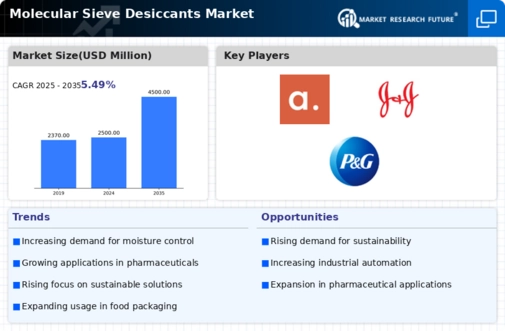


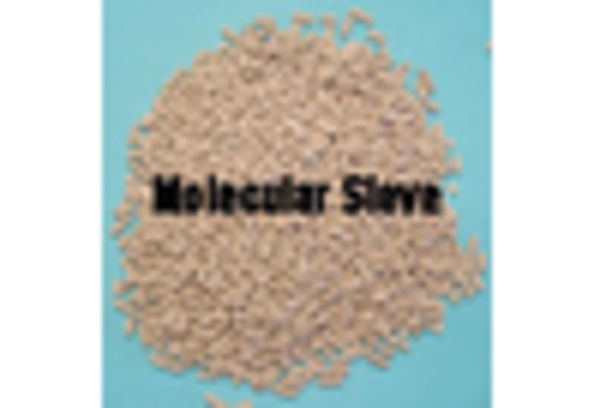
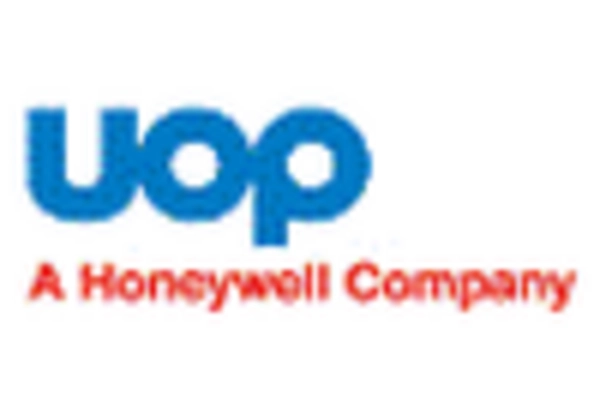
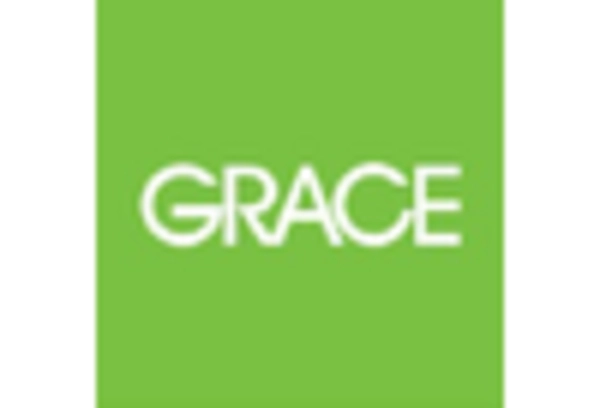
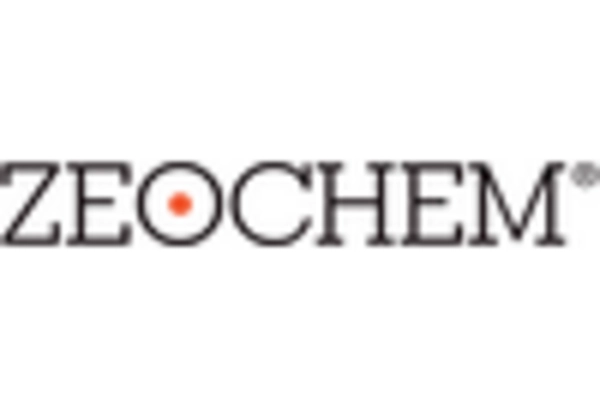









Leave a Comment